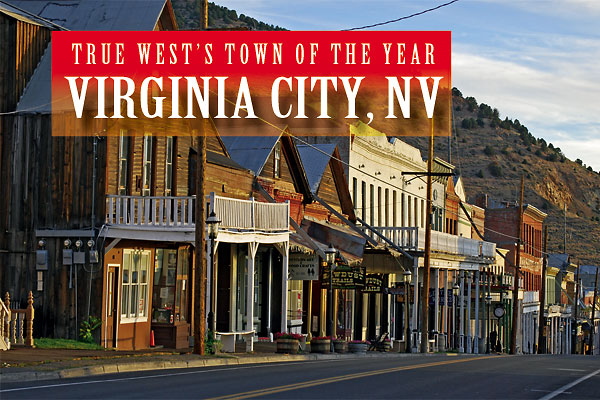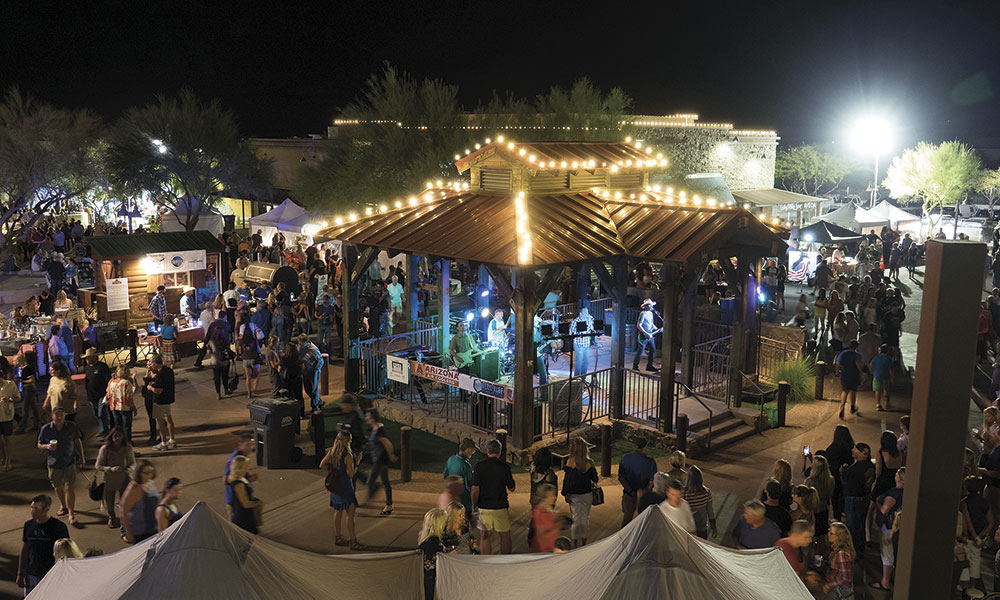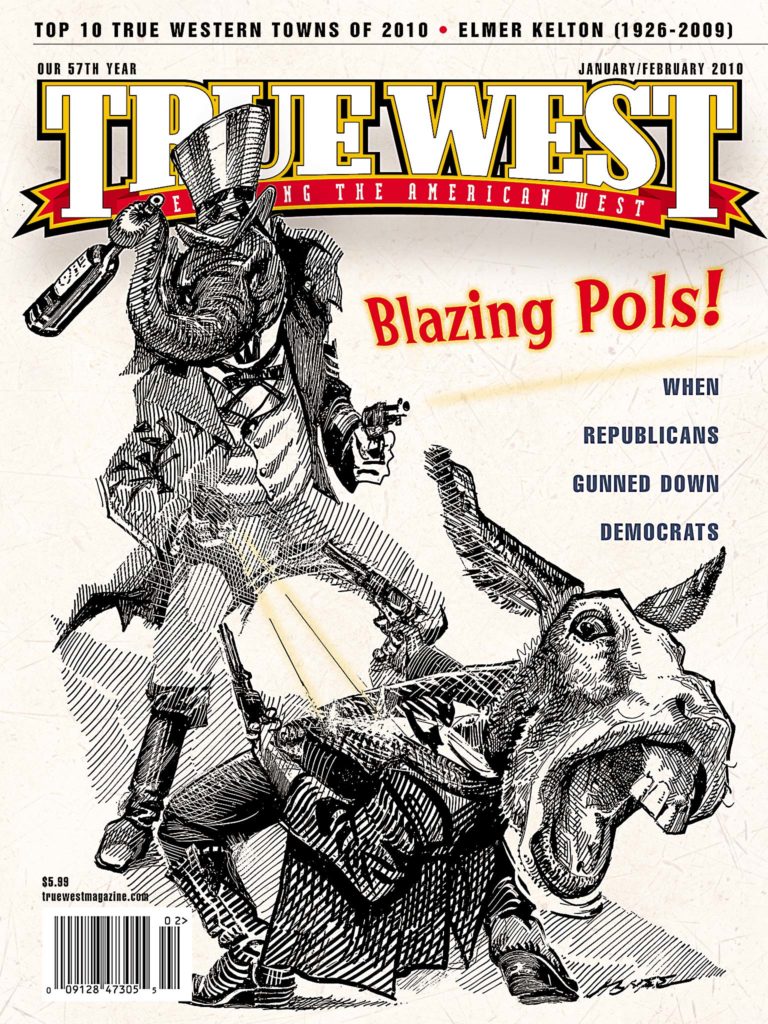TOP TRUE WESTERN TOWN OF THE YEAR: VIRGINIA CITY, NEVADA!
The year 2009 was the 150th anniversary of the Comstock Lode, the first major U.S. discovery of silver ore, located under Virginia City, Nevada—population 1,000.
To celebrate the anniversary, the University of Nevada opened a special exhibit that featured Mackay silver, maps of mining claims, stock certificates, mining company records and letters from miners. The university also hosted free “Comstock Conversations” to discuss various aspects of the era, ranging from Mark Twain reporting at the Territorial Enterprise to a controversial brothel play.
In this important anniversary year, Virginia City also hit another milestone. On August 14, 2009, the Queen of the Short Lines ran the first train over the Virginia & Truckee Railway line in 68 years. The Nevada Commission for the Reconstruction of the V&T Railway is rebuilding the line from Gold Hill to Carson City, with completion due in 2012. The V&T first rolled on the tracks in 1870, over a route that made enough turns to go around in a circle 17 times, earning it the title as the “Crookedest Railroad in the World.”
Virginia City is a National Historic Landmark that attracts more than two million visitors per year. The historic district includes Gold Hill, Silver City and downtown Dayton, numbering 382 contributing buildings and 14,750 acres. Don’t listen to the yarn that the district is the nation’s largest; former Nevada State Archivist Guy Rocha has busted the myth. In terms of acreage, the King Ranch in Texas beats it out at 1.2 million acres. In terms of buildings, the Lancaster Historic District in Pennsylvania has the most with 13,411 contributing buildings.
What Virginia City does have is good reason to be a national landmark. Boardwalks still line the streets, showing off the remarkable collection of 19th-century buildings, abandoned mine shafts and thousands of archaeological sites. Some of its most notable buildings include the First Presbyterian Church, built in 1867 and one of the few buildings still standing after the Great Fire of 1875; the state’s oldest hotel, the 1861 Gold Hill Hotel; and the 1885 Piper Opera House. The Barbary Coast archaeological digs in 2000 have allowed for greater interpretation of Virginia City, where ethnicities mixed freely, as proven by one of the dig sites, the black-owned Boston Saloon.
The Comstock Historic Preservation Weekend, held every May, highlights many of these attractions. The event is organized by the 1876 Fourth Ward School, the Nevada Humanities and Storey County.
That Virginia City is a national treasure is unquestionable. Unfortunately the town has been under threat since 2004, according to the National Historic Landmarks Program. Several of its buildings, a portion of the historic highway at Greiner’s Bend and the entire mountainside adjacent to Gold Hill are in danger of sliding into an inactive mining pit that developed in the 1970s. Some of the under-utilized buildings are deteriorating. And the cemeteries in Virginia City and Gold Hill suffer from vandalism.
Preservation leaders have already stepped up to the plate, forming the Comstock Cemetery Foundation to deter the vandalism. More than 100 stolen cemetery artifacts have been returned, and volunteers conducted a survey to find out the motive of these “souvenir hunters.” (The cemeteries seemed abandoned, so they did not see anything wrong with taking the artifacts.) The cemeteries are well cared for now. Board members work for free, utilizing their expertise to attain matching funds for grants. Since the formation in 2000, the board has completed nearly $3 million worth of work for the Comstock cemeteries.
We’re not the only ones who find value in Virginia City. The National Trust named it one of the top 12 Distinctive Destinations in 2009. True West has named it our number one town of 2010 precisely because it is such a richly preserved heritage town. Don’t let Virginia City lose its charms. Do what you can to keep the town from sliding out of history.





